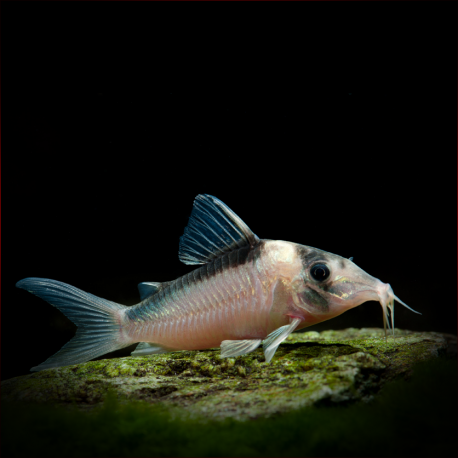More info
Datasheet
| Minimum Tank Size | 80 litres / 21.13 US gallons |
| Maximum Size | 6.5cm / 2.56inches |
| Temperature | 20°C / 68.00°F - 26°C / 78.80°F |
| Hardness | 1.01dgH / 18ppm - 5.04dgH / 90ppm |
| pH | 4.0-7.0 |
General Description
The Corydoras Imitator, a member of the Callichthyidae family in the Siluriformes order, is a peaceful and gregarious species known for its color pattern featuring an oblique dark bar along the dorsal surface. These fish are part of a group from the rio Negro region that includes several other similarly-colored species.
Habitat and Distribution
Endemic to the upper rio Negro basin in Amazonas state, northern Brazil, and Amazonas state, southern Venezuela, the Corydoras Imitator thrives in pristine blackwater tributaries and flooded forest areas with dark, organic-rich water. They are often found in habitats with low hardness, conductivity, and a pH of 4.0-6.0, sharing their environment with small characids, lebiasinids, and Apistogramma dwarf cichlids.
Aquarium Setup
When setting up an aquarium for Corydoras Imitator, it's essential to provide a substrate of fine sand or clean rounded gravel. Decorate the tank with driftwood branches and dried leaf litter for security and aesthetics. Refer to a hardness range of 18-90ppm, a pH level of 4.0-7.0, and a temperature between 20-26°C (see table).
Behaviour
Imitator Corydoras are best kept in groups of 4-6 individuals as they are social and thrive when surrounded by their kind. They are peaceful in nature, contributing positively to a community tank dynamic.
Feeding and Diet
These foraging omnivores accept various foods, including sinking dried options, small live, and frozen varieties like chironomid larvae and Tubifex. Feeding them a varied diet is crucial for their health, and they should not rely on leftovers from other tank mates for sustenance.
Reproduction & Dimorphism
Breeding Corydoras Imitator involves maintaining a ratio of males to females, performing water changes with cooler water when females are full of eggs, and providing ample oxygenation and flow in the tank. Females tend to grow larger than males, especially when sexually mature, displaying a broader and deeper-bodied appearance.
Etymology
The name Corydoras stems from the Greek words for "helmet" and "skin, hide of an animal," indicating the bony plates on their flanks. "Imitator" originates from Latin, meaning "mimic." These names reflect distinctive characteristics of the species.

